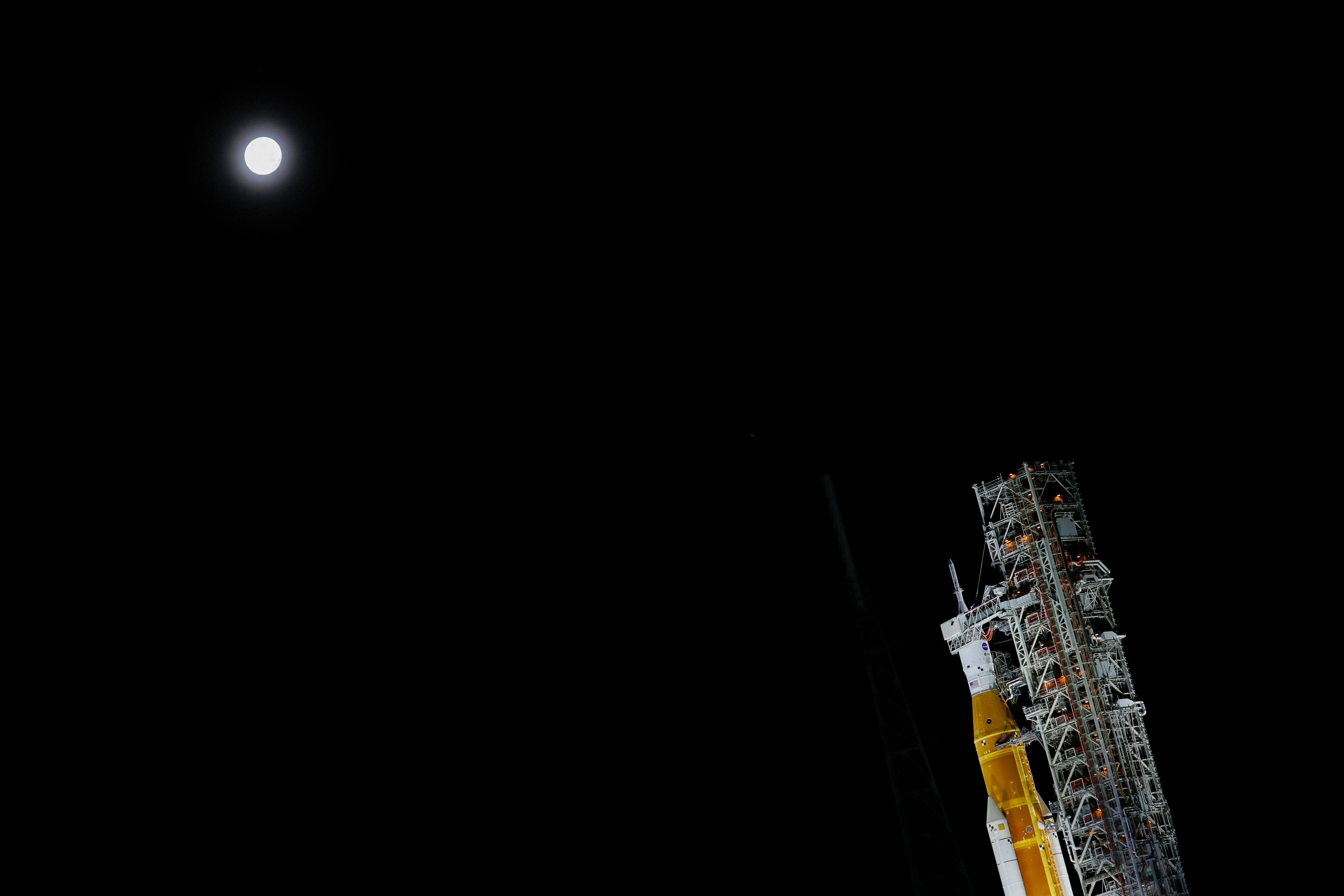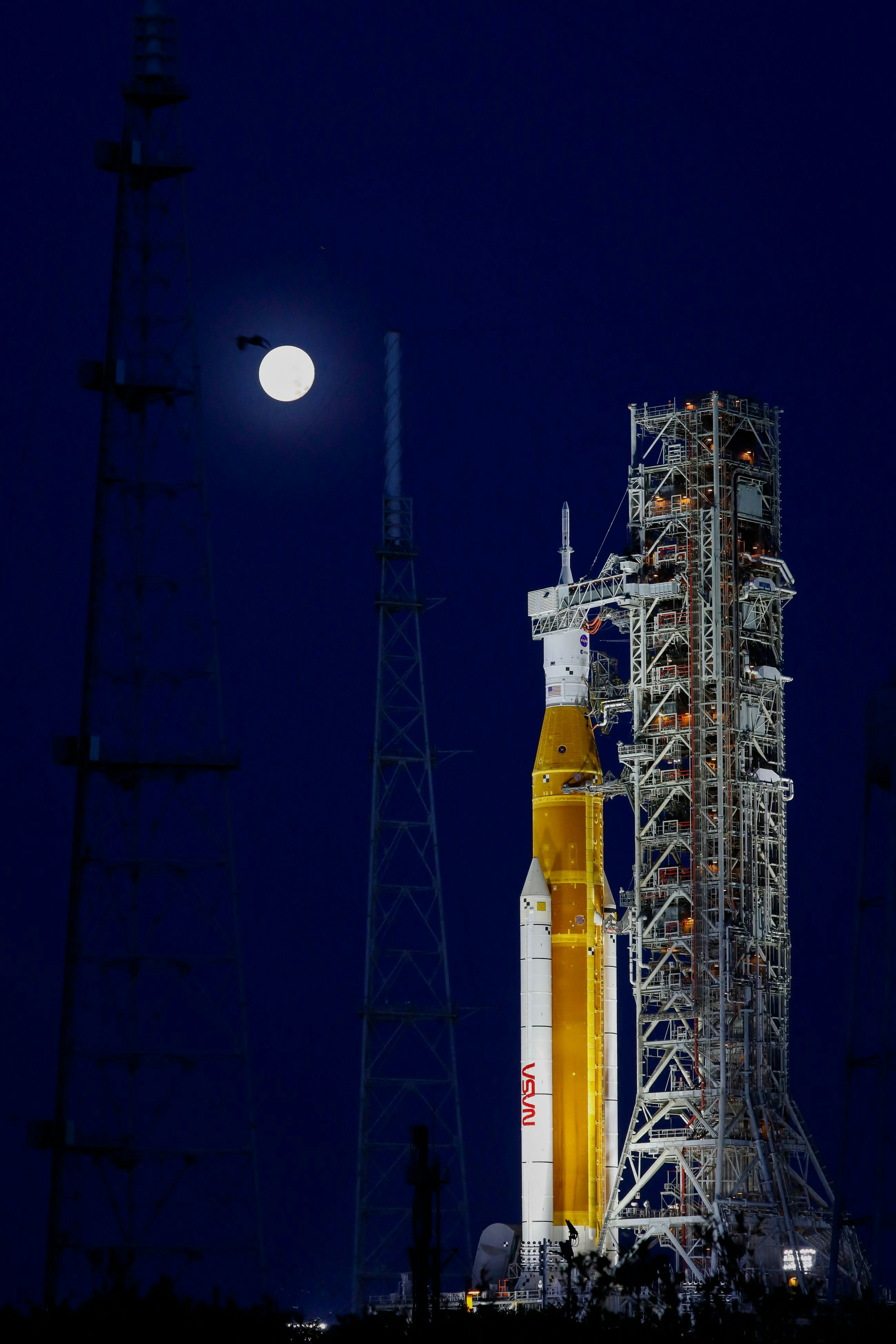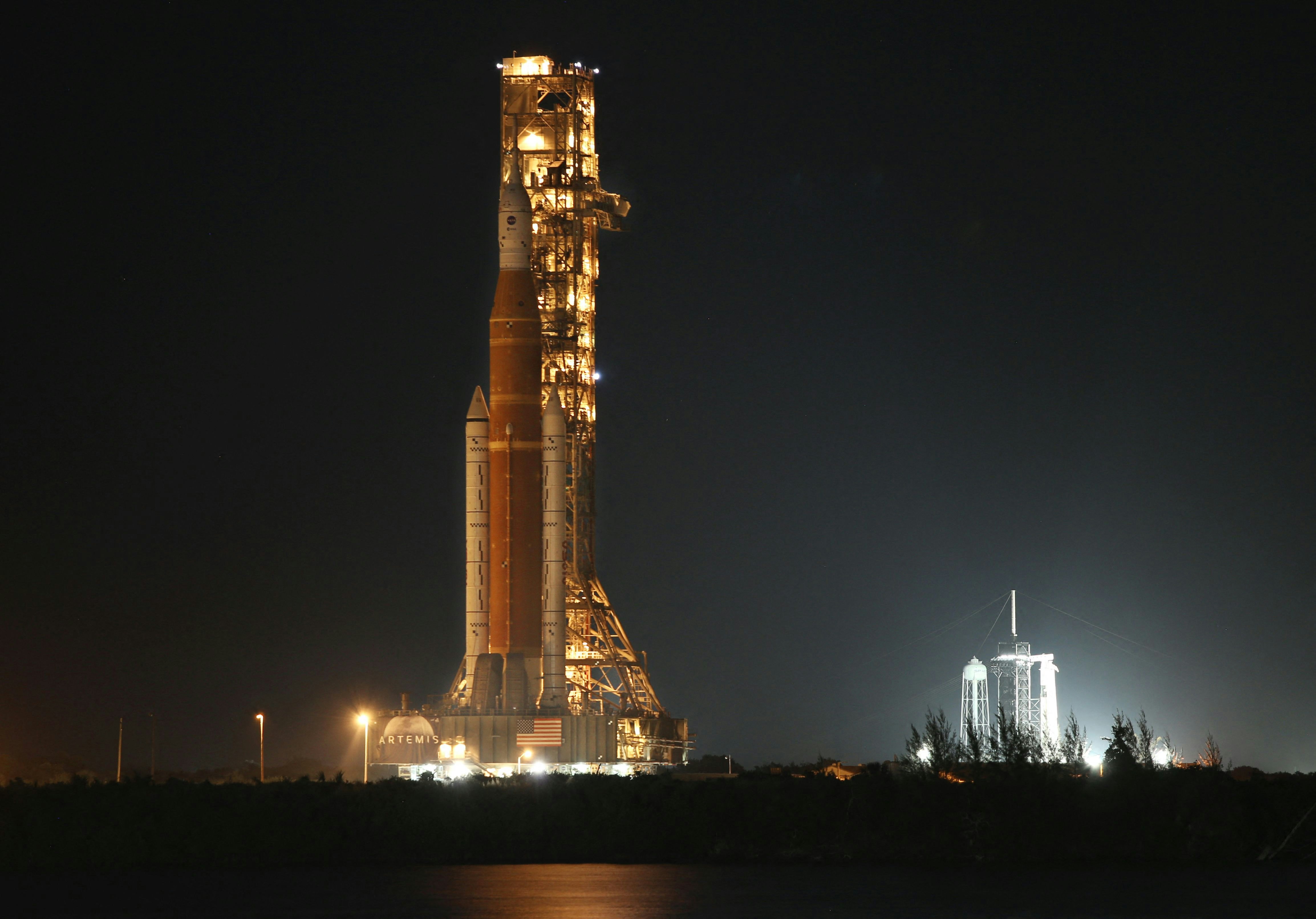
This month, engineers at Kennedy Space Center (KSC) in Florida stepped inside the belly of their Artemis 1 mega-rocket to troubleshoot a component the size of a fist. With this undertaking, NASA has confidently announced three tentative dates for the debut flight of their most ambitious return to the Moon since the Apollo program.
The collet is a small ring that sits on the inside wall of the Space Launch System (SLS) engine section, according to NASA’s Artemis blog. Now that teams have tightened the collet’s loose fasteners, they await new testing to prove whether or not this is the critical fix to solve Artemis 1’s pesky hydrogen leak, which remained unaddressed during the last major systems test on June 20.
Why it matters — Artemis 1 is a test flight of NASA’s new cis-lunar technology. There will be no humans onboard this year’s space jaunt. But if the debut flight of the Artemis Program is an overall success, Orion will ride with a crew in a few years for Artemis II.

What’s new — On Wednesday, NASA announced three dates for when it would try to launch its mega-rocket to the Moon, and outlined how long they would last. Over the next several weeks, NASA personnel will make detailed flight plans for each. During the announcement, Mike Sarafin, NASA’s Artemis mission manager, detailed each target date as follows. All count as “long class” missions, he said.
- Monday, August 29 — Launch window opens at 8:33 a.m. Eastern, and lasts 2 hours. Flight duration would be 42 days, with a splashdown on October 10.
- Friday, September 2 — Launch window opens at 12:48 p.m. Eastern, and lasts 2 hours. Flight duration would be 39 days, with a splashdown on October 11.
- Monday September 5 — Launch window opens at 5:12 p.m. Eastern, and lasts 1.5 hours. Flight duration would be 42 days, with a splashdown on October 17.
There are three blackout days between the first and second launch targets. Seraphin says the outbound Orion capsule would not be able to produce power on these days because the spacecraft would be in the shadow of the Earth, due to the planet’s configuration with respect to the Sun. This “eclipse constraint” would make it hard for Orion’s solar panels to collect solar energy.
Here’s the background — The results from the last leg of flight readiness, called the wet dress rehearsal, have been snagging NASA’s plans. The space agency performed three of these multi-phase fueling evaluations in April, but as they practiced pre-flight procedures down through terminal count, they encountered issues that resulted in months of reevaluating launch targets.

Then, on June 20, the space agency conducted its fourth wet dress rehearsal. Later that week, agency officials called it a success. That announcement came despite the issues that the final test revealed, which KSC personnel are now addressing.
NASA returned Artemis 1 to its massive garage — the Vehicle Assembly Building (VAB) — on July 2 so that teams could perform the necessary fixes.
What’s next — For now, Orion and SLS sit inside the Vehicle Assembly Building at NASA’s Kennedy Space Center (KSC) in Cape Canaveral, Florida. Since entering the facility on July 2, technicians have replaced the seals of SLS that belonged to the quick disconnect on the tail service mast umbilical, which leaked hydrogen fuel during the fourth and final wet dress rehearsal on June 20. The now-tightened collet helps attach the plate of the umbilical to the rocket.
Cliff Lanham, senior vehicle operations manager of KSC’s Exploration Ground Systems Program, said on Wednesday that NASA is in the process of retesting those seals “to make sure we don’t have any leaks there.”
Lanham added that “the umbilical is attached, and we’re just about ready to get into a retest of those interfaces.”

The team is relieved this issue may be a thing of the past, because initially, “that actually gave us a little bit of pause,” said Jim Free, associate administrator of NASA’s Exploration Systems Development Mission Directorate, “wondering if we were going to be able to make a launch attempt on those three dates.”
“A lot of work left,” Free said.
But other pre-flight preparations have been completed ahead of final closeouts. Teams have installed one of the Orion dummies, Commander Moonikin Campos. The mannequin’s last name was determined by a public contest in which Campos came out the winner. The moniker honors Arturo Campos, the electrical power subsystem manager who helped save the Apollo 13 crew in 1970.
The team said NASA will continue providing updates during this final month before the first target date is here.







